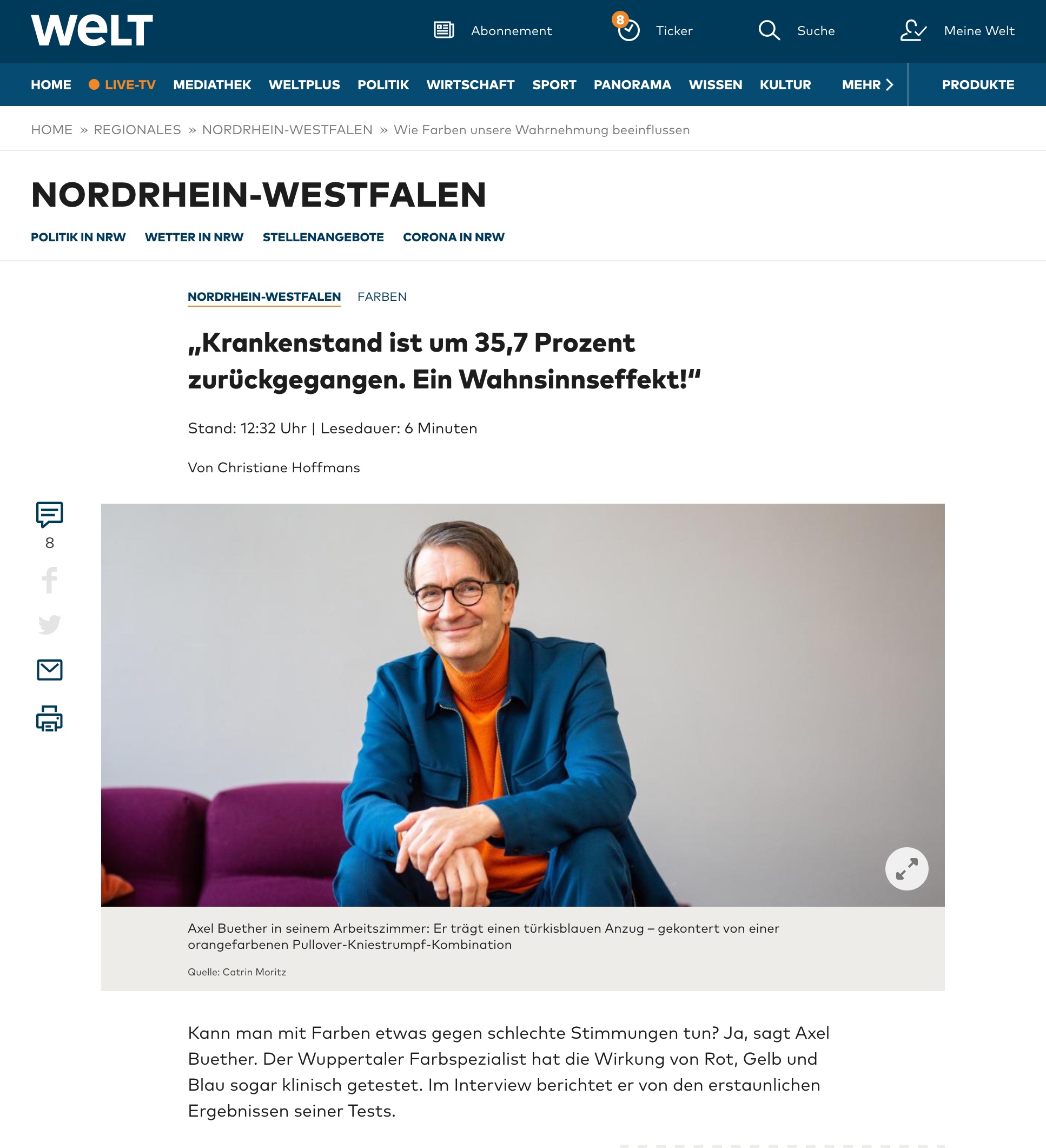
“If you find the right colors for your particular purpose, you’ll feel better and live healthier,” says Axel Buether. The head of the German Color Center and professor at the University of Wuppertal advocates courage and the joy of experimentation. He says: “Color is man’s most powerful sensory medium.”
Mr. Buether, 40 percent of people say blue when asked about their favourite color, 19 percent say red. My favorite color is petrol. What does that say?
We have a color preference from birth. Active people, for example, tend to like warm colors – red, orange-red, yellow or combinations that are striking. Quieter, introverted people prefer more inconspicuous colors: Gray, black or even blue. The fact that you like petrol could mean that you are more of a reserved, profound type who is not indifferent to fashion.
So your favorite color is a question of type?
Not exclusively. There are strong cultural color preferences, a kind of color home. In our work, for example, we have noticed differences between people from northern and southern Germany, or between people from the city and the countryside. And social milieus also communicate a sense of belonging through colors.
We can speak through color?
Colors are a non-verbal means of communication. They have a strong influence on us and our counterparts. They can signal a willingness to cooperate or a desire to be left alone. Camouflage, for example, is one of the most important biological functions of color. And the same applies to us: if I don’t want to reveal anything about myself and still want to be present, I hide behind black. On the other hand, if I want to disappear, I prefer inconspicuous colors like grey, brown or beige.
How many people use color so consciously ?
Almost everything that has to do with color happens involuntarily and intuitively. We perceive colors unconsciously more than 99 percent of the time, as the amount of information we send out and perceive via colors every day would simply overwhelm us. Every color in nature and culture has a function, otherwise we wouldn’t even see it! Processing color information takes up more than 60% of our brain capacity. Colors always have meaning for our lives, regardless of whether we perceive them in people, animals and plants or buildings, products and food.
Are you calling for a different, more conscious approach to color?
I think we should always use color in everyday life in such a way that we feel comfortable with it, that we stay healthy and get the most out of it in every life situation. Find out what effect colors have on your diet, on your well-being at home and at work or what colors tell other people about you! Colors form identity.
Canyou give an example?
Imagine you usually wear dark shades of gray at work and are perceived as authoritarian. Suddenly they come into the office wearing a pink shirt and people say it looks really good on them. Then they actually think that a little openness would suit them, more sensitivity or the willingness to approach others. Color is an external characteristic, but we always read inner qualities into it.
Link to the full interview in the Berliner Morgenpost (28.12.200 by Kai Wiedermann)


